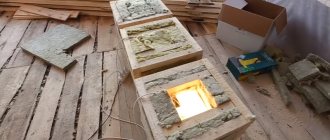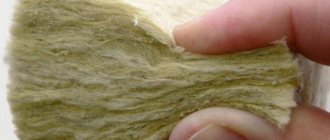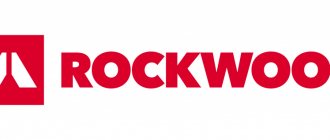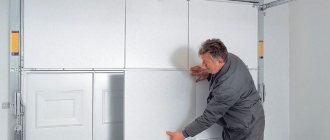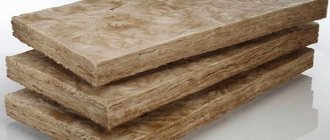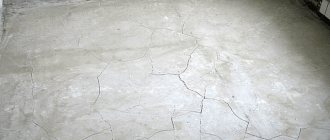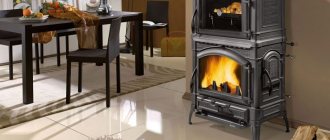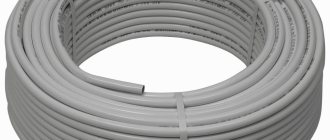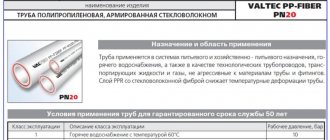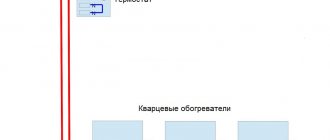Insulation of housing is a pressing problem of our time. Not only in new buildings, but also in old housing stock, people are trying to reduce heating costs. Continuously rising energy prices put significant pressure on the family budget, widening the gap between income and expenses.
By properly insulating your home or apartment, we will ensure comfort for ourselves and our loved ones. The amount on the virtual “counter” of savings after this work will grow every year.
The only question that needs to be answered correctly is what material to use to retain heat in your home? In answering this question, we will look at stone wool and evaluate its advantages and disadvantages.
Mineral wool or basalt thermal insulation, what to choose
Rating: 4.9
Rating: 4.8
Rating: 4.7
Rating: 4.7
Rating: 4.7
Glass wool
Menu
In order not to make a mistake in choosing insulation, you need to have an accurate understanding of the various types of this material available on the modern building materials market. What is better, more economical, and most importantly more effective for your needs: glass wool or basalt wool? This question can be answered accurately and in a structured manner when you have decided exactly where you will use this or that material for insulation.
If you are an amateur in this matter and do not have much experience in the insulation process, it is better to consult with a competent specialist who will definitely help you with advice and tell you how not to make a mistake. With the right choice and high-quality installation, the thermal insulation properties of the object will be equal to all existing norms and rules that must be followed when carrying out construction work.
What is better, glass wool or basalt wool? You will be able to get a definite answer after we understand in detail all the features and specifics of the material, as well as its basic properties and installation methods.
Review of insulation materials
Penoplex
Masters have opposing opinions about it. Some people consider this type of thermal insulation to be the most effective that exists. Some, on the contrary, are sure that polystyrene foam has no place on facades.
Photo: Instagram nadegniy
One of the arguments in favor of this is that Penoplex has a paraffin-polymer film on its surface, which prevents good adhesion to finishing materials. Therefore, decorative finishing can quickly “fly”, especially if the surface of the penoplex is not sealed before plastering. They blame him for both moisture resistance and the greenhouse effect in the house. This is really a disadvantage that should be smoothed out by a well-designed ventilation system.
Photo: penoplex.ru
Defenders of Penoplex claim that there are special plaster mixtures that contain substances that penetrate well into the structure of the material.
Among its positive properties are low thermal conductivity, safety for human health, strength (a car can drive over penoplex without leaving visible damage), resistance to microorganisms, long service life and the same 100% moisture resistance: EPS completely blocks the entry of moisture from the outside .
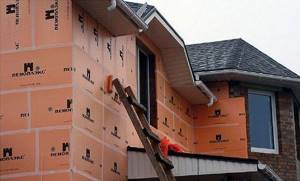
Photo: Instagram domfasad.kz
Styrofoam
A close brother of penoplex, they are made from the same raw materials, but using different technologies. Polystyrene foam is very fragile, does not “breathe” at all, is capable of absorbing a lot of moisture and quickly deteriorates in the sun if it is not covered with anything. However, it is good in its own way: cheap, lightweight, absorbs noise, protects from the cold and is easy to install.
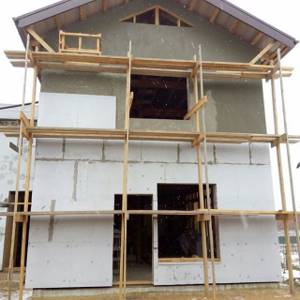
Photo: Instagram vankevich_siarhei
But it is absolutely not suitable for wooden houses: they can begin to rot. And if you live near fields where many rodents live, it is better to consider other insulation materials: mice love to live in polystyrene foam.
For facades, you need to use material that has a “talking” marking with the letter “F”.
Mineral wool
It can be stone (made from granite, basalt, porphyrite), slag (metallurgical waste) and glass (residues from glass production, plus soda, limestone, dolomite and borax).
Stone is a favorite because it gives high-quality and durable results, and is considered the most environmentally friendly of all, although it contains phenolic binders.
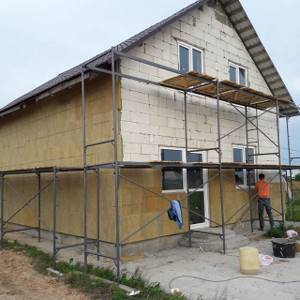
Photo: Instagram fasady_belarus
Slag is more often used to insulate sheds and garages than houses, since its service life is not very long.
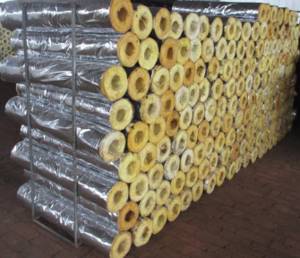
Photo: russian.alibaba.com
Glass wool is resistant to fire, so it is optimally placed in wooden buildings.

Photo: krasnodar.tiu.ru
Mineral wool protects well from dampness if it is chosen correctly: it should be a dense wall material for outdoor use, with moisture-proof impregnation. If these conditions are met, it does not interfere with the normal circulation of air and steam, while moisture does not accumulate inside it, the material does not become damp, and condensation almost does not occur in the premises.

Photo: Instagram fasade_maykop
Cotton wool is also fire resistant and does not release toxins when heated. There are acoustic species that exhibit a good sound barrier.
There is, perhaps, only one downside: there are questions about the environmental friendliness of the material. Although it is in small quantities, it releases phenol-formaldehyde resins. Rospotrebnadzor claims that in a minimum dose they are harmless, but some people still prefer other insulation materials.
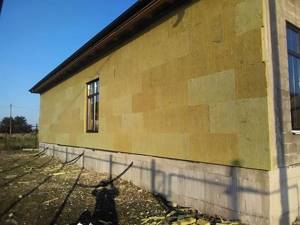
Photo: Instagram fasade_maykop
Polyurethane foam
The chemical composition is similar to foam rubber, but it is produced in liquid form. They began to use it in decoration recently. It has all the above positive properties of other thermal insulation materials. In addition, rodents and insects do not perceive it. And due to the absence of joints, the protective properties are excellent. PPU is also credited with excellent adhesion to almost any surface.
But to ensure that the characteristics of the material do not deteriorate, it is necessary to strictly follow the application technology, and this is not always easy.
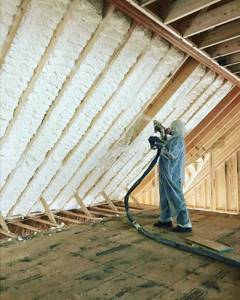
Photo: Instagram uteplenie_ppu_krasnodar
Article continues after advertisement
Cellulose
It is called ecowool because it consists of 80% recycled waste paper impregnated with an antiseptic - boric acid. It also contains fire retardants to reduce the level of flammability. Thermal conductivity is identical to other types of wool.

Photo: extrawool.ru
However, cellulose absorbs water, and if the installation technology is violated, its properties will deteriorate. In addition, it is very loose and inconvenient to work with. In terms of durability, like any natural material, it may be inferior to “synthetics”.
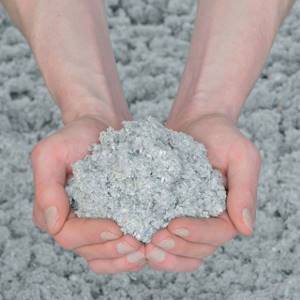
Photo: Instagram ekovatatomsk
Pros and cons of using mineral wool
Undoubtedly, this one of the most popular materials for thermal insulation has its advantages and disadvantages. Now let's look at them in more detail.
There are the following advantages to using mineral wool:
Mineral wool allows air and steam to pass through well. Thus, in rooms insulated with mineral wool, free air and steam exchange occurs, preventing the formation of condensation, the growth of mold and mildew.
Cotton wool is not subject to combustion. It is absolutely fireproof, and even in the event of fire, it is not exposed to open flames
This quality is especially important for insulating objects with a high fire hazard or buildings susceptible to combustion, for example, wooden ones.
High moisture resistance. Mineral wool, despite its appearance, has the useful property of not absorbing, but rather repelling water
Moisture from outside does not penetrate into a room insulated with mineral wool, thus the structure retains its appearance and performance properties longer.
Noise insulation. Mineral wool rightfully occupies one of the leading positions in the ranking of materials for quieting a room. Due to the inherent elasticity of the material, it perfectly protects the building from the penetration of street noise.
Physical parameters. Mineral wool is not subject to shrinkage or deformation during use. No matter how many years it serves, its physical dimensions will remain in its original form.
Atmospheric resistance. Mineral wool is not afraid of temperature changes, frost or heat. Even repeated freezing will not affect the condition of its fibers.
Ease of use. You can even use mineral wool for thermal insulation yourself, without involving specialists in the field of construction. It is easy to transport - as it does not deform or break, and is easy to install.
Mineral wool has various external coatings: aluminum foil - as an additional heat insulator, canvas, kraft paper. It's convenient to use.
Inorganic origin. This insulation is made on a synthetic basis, which means that during operation, it is not afraid of rodents, fungi, and microorganisms.
Optimal cost. Mineral wool is the very material that perfectly combines price and quality. With all its advantages, the cost of cotton wool is not high, and is quite affordable for every homeowner.
As you can see, mineral wool has a lot of positive qualities, thanks to which it has established itself as a strong and durable insulation. As for its shortcomings, only one can be highlighted:
- Mineral wool can be dangerous precisely when working with it, since when exposed to high temperatures it can release phenol, and this is a substance that poses a danger to human health. In conditions with normal ambient temperatures, mineral wool may not pose a danger. In order not to cause harm to your well-being, when working with mineral wool, you must follow safety rules, in particular, be sure to use a respirator, safety glasses and gloves.
Advantages of a wet façade
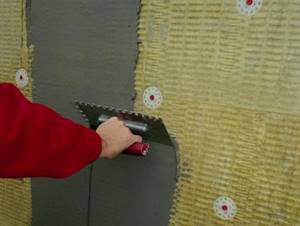
In modern construction practice, wet facade technology has long been economically justified. Today, the pricing policy has been increased for almost all materials, so all developers are looking for an option on how to achieve a good effect at a low cost. This technology has gained popularity due to its good thermal stability, which allows you to save money during the heating season. This construction method will also allow you to achieve the following positive characteristics:
- Will reduce air conditioning or heating costs by approximately 50%;
- With the help of mineral wool, you can not only reduce the weight of the facade, but also the total cost of construction;
- The size of rooms, thanks to wet technology, can be increased by 5%;
- The wet facade method can be rationally used for any materials and exterior finishing;
- The installation work is very easy, so you can do it yourself.
- Such thermal insulation has a positive effect on the service life of the building;
- If you choose the right insulation parameters, you can reduce the risk of deformation of external walls from exposure to temperatures;
- The technology also eliminates the problem of thermal insulation of interpanel seams.
Manufacturers and prices
In recent years, a whole “cage” of manufacturers of high-quality stone wool has formed on the market. These are foreign brands Isover (Izover), Rockwool (Rockwool), Paroc (Parok). The domestic company TechnoNIKOL competes with them on equal terms. The products of the Russian company Izovol have also earned a good reputation.

The range of products they produce covers all areas of insulation, from the basement to the roof.
For a correct comparison, consider the price for 1 m2 of insulation with a thickness of 10 cm for universal use, offered by different companies:
- Rockwool LIGHT BUTTS SCANDIC (37 kg/m3) 170-190 RUR/m2;
- Isover MASTER OF WARM WALLS (38-48 kg/m3) 160-200 RUR/m2;
- Paroc EXTRA (30-34 kg/m3) from 200/m2;
- TechnoNIKOL ROCKLITE (30-40 kg/m3) from 160/m2;
- Izovol L-35 (35 kg/m3) from 160/m2.
TechnoNIKOL is a reliable Russian brand
This is an exclusively Russian brand that has 53 factories in 7 countries. Among them are Germany and Great Britain, Italy and Lithuania. Official representative offices are located in 18 countries. The company's training centers are also located there. TechnoNIKOL has its own Research Centers for the development of new technologies for heat and sound insulation. The products of this concern are very popular due to competitive prices and are sold in 95 countries.
TechnoNIKOL general building thermal insulation based on stone wool
An inexpensive way to perform thermal insulation on any construction site is with materials based on stone wool with a universal purpose. At TechnoNIKOL such products are represented by the BAZALIT series. All brands can be mounted horizontally or vertically.
- BAZALIT L-30 - has a density of 25-35 kg/m3 and a thermal conductivity of 0.032 W/(m*K) at an outside temperature of 10 degrees. Well suited for a base layer followed by cover.
- BASALIT L-50 - denser slabs (36-50 kg/m3), designed for installation in any spatial position. Particularly good for the bottom layer when insulating floors and interfloor ceilings.
- BASALIT L-75 is the most dense material based on stone wool with an indicator of 51-75 kg/m3. Vapor permeability of 0.5 mg/(m.h.Pa) allows its use in the middle layer on walls with light masonry.
TechnoNIKOL stone wool for insulation of all types of roofs
For all types of roofing, the TechnoNIKOL company has developed a line of TECHNORUF insulation materials. The TECHNORUF N EXTRA brand is produced in the form of a basalt slab with a density of 90-110 kg/m3 and can withstand pressure up to 3000 kg per 1 m2. It is optimal for arranging a sloping roof. TECHNORUF N PROF is next in class and has a density of 110-130 kg/m3. With a deformation of 10%, it is capable of carrying a load of up to 4000 kg per square meter, which is also not bad for insulating a roof of complex shape.
TECHNORUF V PROF is designed for all types of flat roofs. It has a pronounced hydrophobic effect. It can act as the top durable layer in three-layer structures. Its density is 175-205 kg/m3, and its strength can withstand up to 8000 kg of pressure per m2. To quickly create a slope on a flat roof for precipitation, use TECHNOROOF WEDGE 4.2%, which automatically forms a slope contour. At the same time, cotton wool itself effectively combats cold retention and has a thermal conductivity index of 0.038 W/(m*K).
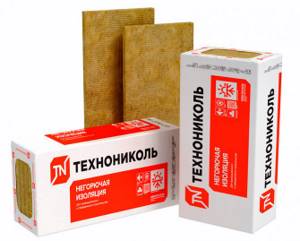
TechnoNIKOL TECHNORUF N EXTRA.
TechnoNIKOL stone wool for insulation of ventilated facades
For ventilated facades, the manufacturer offers a whole line of basalt wool from the TECHNOVENT series. TECHNOVENT EXTRA brand is quite suitable as a base layer or in combination with another insulator. Its breathability is 35 m*s*Pa.
There is another type of this material - this is TECHNOVENT N PROF, the air permeability of which is 80 m*s*Pa. The insulation is intended for use in industrial and civil construction during new construction and reconstruction of buildings and structures for various purposes as an inner layer with two-layer thermal insulation in curtain wall systems with an air gap.
TechnoNIKOL stone wool for insulating a wet facade
TECHNOFAS EXTRA insulation, designed to retain a thick layer of plaster, is well suited for wet facades. The density of the slab is 80-100 kg/m3, and the thickness is from 50 to 150 mm.
When a thin layer of plaster is planned, you can save money and choose TECHNOFAS EFFECT, which, with a smaller cross-section, has an increased density of 125-137 kg/m3, which will provide the required strength. TECHNOFAS DECOR is produced for insulating facades on balconies and loggias, therefore it has an increased tensile strength of 25 kPa.
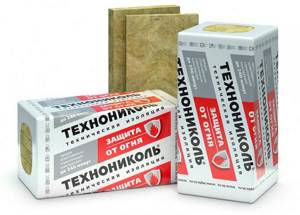
TechnoNIKOL TECHNOFAS EXTRA.
Characteristics of stone wool
The material is based on rocks. Their processing makes it possible to obtain a product that can withstand heat transfer. This becomes possible thanks to the design of the product - the presence of cells in it that retain air.
Composition and properties of stone wool
There are several substances in basalt rock:
- stone;
- fibers;
- connecting components.
After combining them, the building material acquires new qualities that are highly valued by specialists. The main one is the property of maintaining a comfortable temperature in the room. After insulation, the house will be cool in summer and warm in winter.
One of the types of wool - stone slabs, is not capable of deformation over many years
Particular attention is paid to the vapor permeability of the product. When there is a large amount of moisture in the room, it does not absorb it, but repels it
Types of insulators
There are various modifications of insulation:
- cylinders;
- rolls;
- slabs
They may differ in rigidity, density, and size. Rolls are very popular among buyers. Their density is insignificant. The sheet shrinks well. However, the product protects the object less well from moisture. That's why it's foil-coated on one side. To improve the properties of the product, metal film is also used. The dimensions of the product depend on the manufacturer's brand.
The boards are mainly used to insulate walls and ceilings. Their density is quite high. This allows you to quickly work with them - cut, fasten, finish.
The slabs can withstand loads well and are waterproof. The joints formed during installation are easily hidden when plastering the wall. Some types have a special groove or ridge, which greatly facilitates the installation process. Sometimes they are used for insulation:
- ventilated facades;
- different types of frames;
- some objects for the purpose of sound insulation.
In most cases, the width of basalt stone wool insulation is 1 m, the length is 2 m. Some manufacturers produce cylindrical insulators. They are used for pipes. The size depends on the diameter of the communications. The cylinders include:
- foil;
- mineral fibers;
- fiberglass mesh for reinforcement.
Types of stone wool insulation are easily distinguished by markings. The designation P-75 indicates a low density of the insulator. It is laid on walls that will not undergo significant loads. Products marked P-125 have improved sound insulation qualities. PPZh-175 means that the product has a high density. The letter Z speaks of toughness. Cotton wool marked PPZh-200 is the densest. It also belongs to fire-resistant insulators.
Features of thermal insulation of ceilings with cotton wool
Mineral wool is considered a good insulation material for ceiling cladding. The building material is suitable for use both in the attic and in living spaces.
The following components can serve as raw materials for the production of mineral wool:
- broken glass;
- sand;
- blast furnace slag;
- basalt rocks.
Mineral wool is the most common building material used for insulating ceilings. The following types of mineral wool can be used for wooden houses:
- slag wool;
- glass wool;
- stone or basalt wool.
However, many owners of private houses continue to use mineral wool to insulate the ceiling area. This is due to the fact that this type of building material has many advantages over analogues, but the list of disadvantages is small. A good level of thermal insulation is achieved by using thin mineral wool boards with a foil coating. Such insulation almost does not hide the free space, is fire resistant and does not allow heat to escape from the room, reflecting it back.
Advantages of ceiling insulation with mineral wool
Thermal insulation material such as mineral wool has a whole list of advantages:
- The minimum thermal conductivity coefficient allows you to maintain a comfortable temperature in the room throughout the year.
- Installation of the material is extremely simple, which allows you to carry out the work not only with the involvement of professionals, but also with your own hands. This has a positive effect on the overall cost of repairs.
- Availability of building material - the cost of mineral wool is significantly lower than that of similar insulating materials.
- Mineral wool does not support combustion, withstanding temperatures up to 1000 degrees Celsius.
- Mineral wool fits into all hygiene standards in force today and is a natural material.
- The insulation provides excellent sound insulation.
- The material is resistant to chemicals and microorganisms.
Disadvantages of installing mineral wool on the ceiling
Despite the impressive list of advantages, the material also has significant disadvantages:
- Low quality materials most often contain toxic substances and are unsafe for human health.
- The porosity of the material is high, which negatively affects its strength.
- Compared to polystyrene foam, the weight of the insulation is quite significant, which can create difficulties with arranging the insulating layer from the inside.
- You can work with the material only if you use protective equipment for your eyes, hands, and respiratory organs.
- The heat insulator is exposed to moisture, which significantly deteriorates its basic qualities.
Criteria for choosing mineral wool
When choosing the appropriate type of mineral wool insulation, it is recommended to rely on the following criteria:
- thermal conductivity coefficient and material thickness;
- sheet density, characterizing the load on insulated structures;
- hygroscopicity indicators;
- type of material supply: rolls or plates;
- soundproofing properties;
- type of fiber and the presence of harmful chemical components in the composition;
- tensile strength and flexibility for insulating surfaces of complex shapes.
Experienced specialists give the following recommendations and advice on choosing high-quality mineral wool:
despite the high cost of products from branded manufacturers, it is recommended to use them, since they have guaranteed characteristics and, most importantly, have a declared durability; the choice of rolls or slabs depends on the type and complexity of the insulation work, but should always be reduced to obtaining a minimum number of connecting seams; It is better to discard material with fibers located horizontally or vertically along its length in favor of those with random ones, since it has greater strength; the cost of wool is determined not only by the type of fibers, but also by their density, so it is important to first study the technical characteristics, and not look at the price; you need to find the best option to obtain a sufficient level of thermal insulation without overloading the supporting structure; for insulation of residential buildings, mineral wool with a minimum content of formaldehyde resins should be selected; insulation, even with a minimum level of hygroscopicity, must be waterproofed in order to maximize its service life, so you need to make appropriate changes to the cost estimate in advance; Before purchasing, it is important to make sure that the material meets the declared characteristics: sheet size, thickness, flexibility, shape retention.
In addition, for ease of installation, it is important to select mineral wool according to its rigidity, which will allow it to be tightly joined to the sheathing, eliminating the appearance of air grooves, gaps and other defects. This parameter can be influenced not only by the thickness of the layer, but also by the presence of a foil layer or reinforcing fibers
Qualitatively, based on hardness, the following types of mineral wool can be distinguished:
- soft, used for insulating pipe communications (chimneys, pipes) or roofing pie;
- semi-rigid, used for external thermal insulation of facades and as a middle layer in sandwich panels;
- rigid, designed for insulating flat metal or wooden surfaces of walls, floors, ceilings, roofs, etc.
When selecting a material with a suitable thermal conductivity coefficient, you should be guided by the following criteria:
- data on average temperatures in winter and summer in a particular region;
- the thickness of the walls of the building and the thermal conductivity of the materials from which they were built.
Usually, when purchasing materials, they are purchased with a small margin of parameters
However, it is important not to forget about the economic benefits of obtaining real thermal insulation properties compared to the required ones and not to overpay
Dimensions of the material and its calculation
The dimensions of products directly depend on their types. The dimensions of the slabs are determined by the ratio of length and width - 1000×500, 1200×600. Thickness is 30, 50, 100, 150 mm. Cotton wool is actively used to insulate the walls of residential and industrial premises outside. Rigid types of products are used to insulate floating and heated floors.
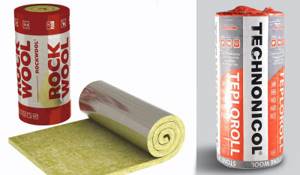
To save money when purchasing, you need to make a preliminary calculation. To calculate the area of an object, determine its width and length. These values are then multiplied. When insulating the entire room, the perimeter of the building is established. The result obtained is multiplied by the height and number of floors. If necessary, determine the roof area.
The packaging indicates the area that the product can cover. When calculating, product shrinkage should be taken into account. Therefore, they buy it in excess - another 15% is added to the total area.
FAQ
When choosing insulation for a home, the question often arises of how safe basalt wool is. Taking into account the specifics of production, the material is made from environmentally friendly raw materials and cannot negatively affect human health and well-being. It is also worth noting the fact that basalt wool is a non-flammable material, so it also protects the room from fire.
People are also often interested in what criteria should be used to choose insulation for walls in an apartment. It is worth understanding that the thicker the material, the higher its thermal insulation qualities, however, too much thickness will reduce the area of the room. The optimal slab thickness for walls in an apartment is considered to be five centimeters. This thickness will be enough to retain heat and limit the penetration of extraneous sounds.
Basalt wool or ecowool
Basalt or stone wool has some similarities with ecowool. The thermal insulation qualities of one and the second insulation depend on the density of the product. Basalt wool is made from rock, which makes the material completely non-flammable. In the case of ecowool, it is considered a product of recycling paper waste. Fillers are added to processed raw materials to prevent rotting and burning. The structure of the basalt slab has a solid base and can be installed under various conditions. As for ecowool, it is free-flowing, so a certain system is required during installation, so making thermal insulation yourself will be problematic.
Basalt wool or mineral wool
All materials have both pros and cons. To figure out which is better, you need to consider the characteristics of the materials. Basalt wool is made from rock by melting. In terms of thermal insulation properties, basalt wool is better, since the structure of the materials has a significant difference in the number of fibers and loose structure. Of course, it’s impossible to say for sure that basalt wool is better, but according to some criteria it is still superior to mineral wool.
Basalt wool or slag wool
A fairly popular thermal insulation material is slag wool. In fact, this material is considered one of the types of mineral wool. Slag wool is made using blast furnace slag. The manufacturing technology is similar to basalt, but the properties and characteristics of the materials differ. Slag wool, like basalt material, is made in the form of slabs. Slag wool can be used to insulate temporary premises not intended for living. Hygroscopic parameters do not allow the material to be used for pipeline insulation.
To summarize, we can say with confidence that there is a lot of heat-insulating materials on the modern market, and you need to choose based on the characteristics and intended work. Having made a comparison, we can confidently say that the most ubiquitous material is basalt wool, since its characteristics exceed other types of insulation.
Tips for choosing
Thermal insulation wool must be of high quality so that it can be used to safely insulate the house from the outside
To find the most suitable option, you should pay attention to various manufacturers of this material. German quality Ursa, Isover, Rockwool is considered the best
When choosing the appropriate option, you should pay attention to the relationship between price and density of mineral wool.
If you want to buy cheaper options for glass wool and slag wool, then you should not rush, because these materials have low sound insulation, and in addition, they cannot retain heat as well as mineral wool. Installation is also more difficult, because working with glass wool is very dangerous, especially in the wrong hands.

When choosing the highest quality material for wall insulation, you should give preference to mineral wool, but this material also has its own characteristics.
It is important to find out in which direction the fibers are located: in a vertical position, the product will better store heat and insulate from excess noise. With a dynamic arrangement of fibers, cotton wool acquires more durable characteristics and is able to withstand heavy loads.
It is worth paying attention to whether there is a GOST mark on the packaging, which will also say a lot about the manufacturing technology of the product. If we are talking about mineral wool slabs, then they are declared according to GOST 9573-96, and in the case of pierced mats it will be GOST 21880-94, as for PPZh slabs, the value will be equal to GOST 22950-95.
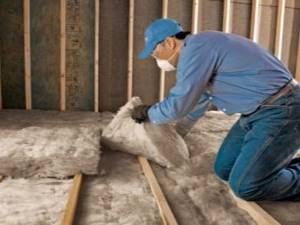
When planning to decorate the interior with mineral wool, you need to take care of the correct dimensions of the material. All indicators must exactly correspond to those indicated on the packaging, so it is better to personally measure everything, especially the thickness of the product, on which the quality of the entire repair will depend.
Insulation can be used not only for walls, but also for covering the ceiling, and sometimes the floor. If a non-residential space, such as an attic or basement, needs to be made suitable for full or partial occupancy, then the placement of thermal insulation boards cannot be avoided. The roof is insulated in the attic, and the basement is insulated, which helps create optimal living conditions with minimal effort.
What types of mineral wool are produced today
According to GOST 52953-2008, three materials can be considered heat insulators belonging to the mineral wool class: glass fiber, fiber made from slag (slag wool), and stone wool. All these materials have different fiber lengths and thicknesses and differ from each other in parameters. In particular, they have different load resistance, thermal conductivity, moisture resistance and ability to withstand heat.
Glass wool, widely used for insulation in Soviet times, is still quite cheap today. But, unlike slag and stone wool, it is very prickly
Working with it requires the use of precautions. Now let’s talk in detail about each type of mineral wool and list their characteristics
Glass wool
This material consists of fibers with a thickness of 5 to 15 microns and a length of 15 to 50 millimeters. They make glass wool elastic and very durable. You just have to work with it very carefully - after all, fragile glass threads, when broken, can dig into the skin, get into the eyes and injure them. If you accidentally inhale glass dust, you can damage your lungs. Therefore, when working with this insulation, you must wear a disposable protective suit, goggles and a respirator. Don't forget to protect your hands - wear gloves.
We list the characteristics of fiberglass mineral wool:
- Thermal conductivity coefficient is from 0.03 to 0.052 watts per meter per Kelvin.
- Permissible heating temperature is up to 500 degrees Celsius. The optimal temperature would be no higher than 450 degrees Celsius.
- The permissible cooling temperature is minus 60 degrees Celsius.
This is what regular glass wool looks like.
Slag
This material, made from blast furnace slag, has fibers with a thickness of 4 to 12 microns and a length of 16 millimeters. Since slags have the property of residual acidity, in a damp room they can have an aggressive effect on metal surfaces. In addition, slag wool absorbs moisture too well, so it is unsuitable for thermal insulation of building facades. For the previous two reasons, it is not suitable for insulating water pipes, both metal and plastic. In addition, this material is fragile, so it will prick if you take it with bare hands.
Characteristics of slag:
- Thermal conductivity coefficient (dry matter) is from 0.46 to 0.48 watts per meter per Kelvin.
- The maximum permissible heating temperature is up to 300 degrees Celsius. When this value is exceeded, the fibers sinter, and the material ceases to be a heat insulator.
- Hygroscopicity – high.
Stone wool
This type of mineral wool has fibers approximately the same size as slag wool. But they have a significant advantage - they do not prick. Therefore, working with stone wool is much safer than working with glass or slag materials. Its thermal conductivity coefficient ranges from 0.077 to 0.12 watts per meter per Kelvin, and it can be heated up to 600 degrees Celsius. By the way, if they mean mineral wool insulation, then, as a rule, we are talking about stone wool.
Cutting stone wool into slabs.
Of all its varieties, basalt wool has the best parameters. It is made, like an ordinary stone one, from gabbro or diabase. But stone wool also contains blast furnace slag, mixture and mineral components - clay, limestone and dolomite.
These impurities contribute to an increase in the fluidity of the mass; they can account for up to 35 percent of the volume of the entire substance. And the binder component based on formaldehyde resin contains less - from 2.5 to 10 percent. Reducing the volume of this substance makes the material less moisture resistant, but the threat of phenol evaporation is also reduced. As a result, the risk to human health is reduced.
Basalt wool is different in that it does not contain any additional components - neither mineral nor binders. Therefore, it can easily withstand heating up to 1000 degrees Celsius. And it can be cooled to minus 190 degrees Celsius, which will not harm this thermal insulation material at all. Basalt fiber is easily formed into rolls or sheets, and it is also convenient for stuffing mats.
It is also sold in loose form. Both ordinary stone and basalt wool do not burn - if they are heated above the permissible temperature, the fibers of the material will only melt, sintering with each other.
Stone wool slabs.
What are the disadvantages of mineral wool?
Although stone wool fibers do not splinter, tiny pieces of them can still rise into the air, like dust. There is a danger of inhaling them, which is not at all good for health. There is another danger - the formaldehyde resin included in this material can poison us with the phenol that is released from it. But these troubles can be completely avoided if you follow safety precautions.
First of all, do not forget to wear a respirator when working with mineral wool. And also cover the insulation plane over the entire surface with a vapor-proof polyvinyl chloride film. As for phenol, at room temperature it will not be released from mineral wool. Naturally, if you purchase material from a good manufacturer.
True, when the material is heated to a temperature above the limiting temperature, phenol still gets out of control. What to do in this case? Try not to allow the insulation to heat up so much. If this is excluded, then take the more expensive, but absolutely safe, super-thin basalt fiber. No phenol will be released from it. Whatever you choose, try to buy products from a reliable large brand - in this case, the actual technical characteristics of mineral wool will strictly correspond to the declared ones.
Varieties and forms
Styrofoam
In its shape, it consists of air-filled polystyrene bubbles, which are then pressed into slabs of standard sizes: 500x1000, 1000x1000 and 2000x1000 mm. Packaging of the material is in the form of plates of fixed sizes. Polystyrene foam is a white slab material with a rigid foam structure, containing 2% polystyrene and 98% air. The thickness of this material varies from 20 to 1000 mm.
The material has the following advantages:
The long-term use of polystyrene foam as insulation also revealed its disadvantages:
- Quite low quality material is found on sale;
- the material is subject to combustion;
- polystyrene foam serves as insulation for only 10-15 years (depending on its manufacturer and quality);
- the material does not “breathe”.
In order to start working with insulation, it is necessary to perform a number of actions that distinguish this type of material from products for other purposes. First of all, it is necessary to carefully prepare the surface that needs to be insulated. To do this, it needs to be cleaned, leveled and primed. After this, you need to make marks with a plumb line to ensure that the foam slabs are evenly spaced. Then the foam is thoroughly lubricated with an adhesive solution and carefully applied to the wall.
There is no need to put too much pressure on the foam when laying it - it is quite fragile, so damage may occur. Foam boards are laid close to each other. Gaps can be filled with foam. To securely fasten the slabs, it is best to secure them with dowels. A reinforcing mesh is glued on top of such insulation - the final finishing is carried out over it.
Penoplex
This material is better than foam plastic in all its properties, and its installation is simple and convenient for self-installation.
This insulation looks like a waterproof tile with a thickness of 20 mm. The basis of the material is styrofoam, its granules are processed under pressure at high temperatures. The walls inside the house for the installation of penoplex are prepared in the same way as for the installation of polystyrene foam (you need to remove dirt and clean, level and prime the surface).
Finishing work:
- primer for facade work;
- basic finishing (a variety of plasters can be used, both acrylic and silicone);
- choice of final texture;
- painting.
The easiest way: the surface is leveled, finishing putty is applied, primed, and painting is carried out. In construction, material with a thickness of 20-100 mm, a width of 600 mm and a length of 1200-2400 mm is used.
Mineral wool
All types of mineral wool are also suitable for thermal insulation.
Properties of mineral wool:
- not flammable;
- heat conductivity is very low;
- Rodents do not eat mineral wool, but they love to live in it;
- service life from 30 to 80 years.
Thermal insulators of this class come in three types:
The material is available in several varieties:
- in the form of slabs (mats);
- rolls;
- in a formless form.
Basic rules of work
Mineral wool is mainly used to insulate exterior walls, attics and roofs. To insulate the foundation, it is better to use inexpensive, but at the same time high-quality polystyrene foam. It is more rigid and does not allow water to pass through.
If the correct installation technology is not followed, this will significantly affect the result. The material will quickly become unusable, and its high price will hit the budget hard in case of repeated repairs.
Before use, it is necessary to treat the facade with an antiseptic. This will prevent rotting and extend the life of the material. Foam concrete or brick must be cleaned of old paint and plaster before installation. The best time to carry out work is summer.
Before installation, it is necessary to remove window casings and door jambs. After installation, you will have to purchase new window and door cladding, as the thickness of the walls will increase noticeably.
There are two main methods of insulation:
- Dry. It is used only with frames made of wood or steel (lathing). The insulation is installed in the cells of the frame.
- Wet. In this case, installation is carried out using glue and disc dowels.
Glue and dowels are used more often in cases where it is planned to apply a finishing layer. The surface of the insulation can be puttied or plastered.
Dry installation
A frame is used for installation. The slats are installed so that the gap between them is 2 cm less than the width of the wool. This allows you to achieve maximum packing density. All work starts from the corners and smoothly moves to the center. In order for the result to be of the highest quality and the installation to be even, it is necessary to use a level and a cord that is stretched between the corners of the wall.
If a roll is used during installation, then installation is done from top to bottom. The slabs are installed only from bottom to top. The canvas must be secured with construction tape. To fix the result, holes are drilled and dowels driven into them.
The final stage is the installation of counter rails. This allows you to create a ventilated gap. The installation principle is to prevent the mineral wool joints from matching the corners of window and door openings.
If it is necessary to make the insulating layer thicker, the slabs are laid in several layers. It all depends on the need and preferences of the owner.
Wet method
The principle of this installation is to install the insulation on an adhesive solution that attaches the mineral wool to the wall. It is important that the glue allows steam to pass through well, otherwise condensation may accumulate in the material.
A layer of adhesive solution is spread on the wall using a notched trowel. After this, the slab must be pressed as much as possible against the wall. Once the row is installed, it must be additionally secured with disc dowels.
The final stage: glue is again applied to the insulation layer and the reinforcing mesh is fixed. This further strengthens the mineral wool slabs. After this, you can plaster and perform decorative work.
Which mineral wool is better?
Mineral wool is an effective insulation material, without which no construction can be completed today. This material is safe for humans and the environment. It does not burn, does not emit harmful substances and has excellent noise and heat insulation properties.
Types of mineral wool for insulation
Mineral wool, depending on its composition, is divided into:
- glass wool;
- basalt or stone wool.
Glass wool is essentially foamed glass, as it is made from quartz sand and waste from glass production. Its main advantages are elasticity and vibration resistance. They are due to the large length and thickness of the fibers. This is what allows you to compress and bend mineral wool rolls and mats almost any way you like - then they will straighten out anyway.
Basalt wool is made, as the name suggests, from basalt and similar rocks. Basalt mineral wool retains heat well and is an absolutely natural material. It consists of short, crimped fibers, which make it an excellent sound insulator. Facade basalt mineral wool is quite dense, so it can be used under load. It practically does not shrink. Its dimensions remain unchanged at any temperature and at any time of the year.
Mineral wool is available in the form of rolls, mats and slabs. Mineral wool slabs of 1000*600*100 mm and other sizes are usually covered with aluminum foil, fiberglass or non-woven material during the production process. Each of these options has a specific purpose and is used for a clearly defined situation.
For example, mineral wool slabs of 0.24 m3 per package, covered with fiberglass, are used when installing ventilated curtain facades in order to ultimately obtain maximum wind protection. Mineral wool for insulation in a roll, covered with foil, is excellent for insulating horizontal surfaces.
Parameters of mineral wool for insulating walls, ceilings, roofs
Each type of insulation has its own scope of application, where it performs its functions as efficiently as possible. Thermal insulation of a building of excellent quality can only be achieved if each structural element is insulated with appropriate insulation. For interior work, fiberglass thermal insulation is preferable, and for exterior use, basalt insulation.
Mineral wool slabs and mats 50 mm thick are best suited for thermal insulation of pitched roofs, while high-density stone wool slabs and slabs are best suited for flat roofs. For facades of the so-called “wet” type, water-repellent basalt mineral wool is used, and for suspended ventilated facades, compressible mineral wool mats are used.
Our review will consider the products of the following manufacturers:
- Izovol is a domestic company that develops and produces thermal insulation materials that are unique in their composition and manufacturing technologies. The products of this manufacturer are used in the construction of new buildings and reconstruction of old structures, both civil and industrial;
- ROCKWOOL is a world leader in the production of sound and heat insulation materials made from stone wool, intended for buildings and structures of all types. The products of this company are not dangerous to the ecology of our planet and contribute to solving the problem of global climate change;
- TechnoNIKOL is one of the largest international manufacturers of effective and reliable building materials. This company offers consumers the latest technologies that combine global experience with the developments of its own research centers;
- Ursa is a German company that has been present in the building materials market for more than a hundred years. Today it is part of the Uralita Grout concern and produces high-quality heat-insulating materials;
- ISOVER is a French manufacturer of heat and sound insulation materials based on glass and stone fibers. The products of this brand are manufactured in more than forty factories around the world;
- Knauf is a German manufacturer whose mineral wool is famous for its high quality and absolute safety for human health. This is due to the fact that the materials of this brand do not contain phenol-formaldehyde resins, which contain harmful substances;
- Izomin is a Russian manufacturer that specializes in the production of thermal insulation materials made on the basis of basalt fiber. All insulation products from this manufacturer contain water-repellent additives and belong to the category of non-combustible materials. They are distinguished by high quality and attractive prices.
Unique properties of basalt insulation
Let's look at the main properties of stone wool that make it a unique product.
Fire safety and reliability
As we have already said, stone wool is made today from the gabbro-basalt group, which is absolutely non-flammable. After all, the melting point of such fibers is within 1000°C. It is at this temperature that a stone melts, and finding one even in a strong fire is quite a challenge. This level of heating only occurs at the crater of a volcano. That’s why the most fire-hazardous places are insulated with stone wool.
Not only does stone wool not burn, but it also stops the heat from the fire, thereby protecting the internal building structures of the house. Not only to prevent them from burning, but also to prevent them from becoming deformed, collapsing and falling on people fleeing.
All this often provides additional valuable time for evacuation. If you have heard about fires, when a seemingly strong house flared up like a match and collapsed like a house of cards, it was precisely there that there were no such protective elements in the walls.
As you can see, almost all forms of stone wool belong to the non-combustible group:

Another important point is that even at high temperatures, stone wool does not emit toxic substances. This is also important, because often a fire is dangerous not so much because of the high temperature as because of the toxic air, which usually quickly spreads throughout the premises. And the more things in a residential building that burn easily, melt and stink, the worse it is.
Basalt wool is so fireproof that it is even used for underfloor heating:
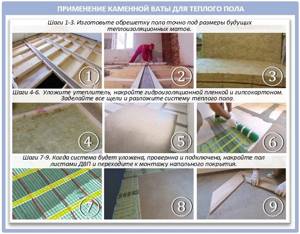
Vapor permeability and “breathable” walls
Today, more and more often, owners of their own homes are asking an essential question: how environmentally friendly and safe is our own home? Is the microclimate in it comfortable, will mold be a problem?
And in this regard, two trends in approaching this issue have already developed today. The first is that the house should be like a thermos, and internal air exchange is organized using a supply ventilation system. The second is that the structures of a residential building must be “breathable” so that the house itself “breathes”, but not due to drafts of an unsealed structure, but due to the vapor permeability of the walls (this mainly applies to wooden buildings).
So, stone wool is also completely vapor permeable. Water vapor in the form of molecules easily passes through mineral thermal insulation and does not condense on the fibers. Thanks to this, the stone insulation does not get wet at all. That is why such insulation is ideal for arranging wooden baths, the walls of which, according to all the rules, should “breathe” and not be a dull thermos.
After all, the entire microclimate even in a residential building depends on whether the walls “breathe.” After all, remember that in our country the natural flow of air when the window is closed occurs due to a slight draft from windows and doors, while abroad they often install special supply ventilation for this purpose.
In any case, if it turns out that this is not enough, or the new plastic window turns out to be completely airtight and will block the already scarce micro-air flows, then the dampness will have nowhere to go. As a result, mold and a musty smell will appear in the house.
This is why advocates of environmentally friendly residential buildings talk about “breathable” walls. For this purpose, serious manufacturers issue stone wool with a special certificate, which allows it to be used for insulation of any room in the house, including children's rooms. The microclimate in such premises should be comfortable and safe. And steam can easily escape through the finishing and not linger in the insulation:
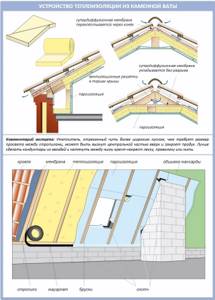
Durability and resistance to stress
The shrinkage of stone wool is so insignificant that it does not affect the durability of the thermal insulation at all. Thus, the geometric dimensions of the slabs are maintained throughout their entire service life, and therefore no cold bridges arise.
In addition, mineral slabs have low hygroscopicity - only 0.5% of the volume. Just in case, today stone wool is additionally impregnated with special water-repellent compounds - water repellents. These are oils or organosilicon compounds.
This is necessary in order to keep the wool in the desired condition during its installation. After all, important construction work is often carried out in wet weather, and even when it rains.
And finally, stone wool has high chemical resistance and does not cause corrosion to metal.
Environmental debate
Stone wool is rightfully considered one of the most environmentally friendly, and the products of some manufacturers even have an Eco Material Green certificate.
But let's add a little tar here. There are studies that basalt wool may be unsafe. Back in 1995, the prospectuses of some companies stated that basalt fibers are glued together with synthetic resin, which is obtained by condensation of phenol and formic aldehyde. And the resin differs significantly in its qualities from the fibers themselves. So, in the oven they do not melt to temperatures above 1000 degrees, but resin does not melt at 200 degrees. The dust from cotton wool itself is also dangerous.
The manufacturers themselves claim that the phenol-formaldehyde binder they use in the process of making cotton wool contains very little of it and cannot pose any threat to human health. But back in 1997, the European Union published a classification of insulating materials, where mineral wool was recognized as potentially hazardous depending on its content of alkaline earth metals and alkali oxides.
Unfortunately, today some manufacturers make cotton wool based on a binder such as phenol-formaldehyde. And these are already dangerous volatile compounds, poisonous, belonging to the second class of danger.
Surely you know that formaldehyde is highly toxic, allergenic, mutagenic and carcinogenic. And in stone wool slabs the binder usually contains from 3 to 6%. In addition, there is quite a lot of this substance in the surrounding space, even in the street air, and especially in low-quality furniture, i.e. it accumulates.
Manufacturers actually say that at a temperature of 250°C the binder begins to burn, but the structure of the mineral wool does not oxidize or change. That’s why, if the environmental friendliness of the finishing materials used is important to you, look at the documents for the selected stone wool option: what kind of binder is used there? Resin or starch?
Another important point. Unlike glass wool, basalt wool does not release thousands of small needles into the air, which is the difference between stone wool and glass wool - but you should also work with it carefully! Please note that abroad workers in protective clothing and a mask insulate walls with it, although our home craftsmen like to take glass wool with their hands. After all, basalt fiber produces fine dust, especially when shaking the slabs.
By the way, TechnoNIKOL once conducted a rather interesting study of buyer expectations. And it turned out that for 87% of those surveyed, the main criterion for choosing construction and finishing materials was environmental friendliness.
It was for this purpose that GreenGuard insulation was developed, which today is called something of an eco-breakthrough in modern construction. We'll tell you about it a little later.
What is mineral wool?
Mineral wool is made from various types of raw materials, and there are some differences in types. However, the principle of its production is the same: the raw materials are heated to very high temperatures, heated and, using special equipment, sprayed into the desired shapes.
Thanks to this production method, cotton wool is a loose material consisting of randomly woven fibers. After spraying, the fibers are impregnated with special solutions based on phenol and water-repellent oils.
Mineral wool is commercially available, usually in the form of mats and slabs of various sizes. Mats are used for insulation of private residential buildings, apartment buildings and similar objects. The slabs are more suitable for covering large areas.
This insulation has a fibrous structure, and the fibers can be arranged in different ways - horizontally, vertically, corrugated or layered. This variety of structure allows you to choose mineral wool for almost any type of finish.
Myth No. 4. Dust release in the house
The myth about dust, which can penetrate the lungs and cause a number of health problems, is associated with the predecessor of basalt wool - glass wool, widely used in Soviet times in the absence of alternative solutions for insulating buildings, communications and structures. Many still prefer this type of insulation today. The glass contained in such material is indeed capable of crumbling under mechanical stress. Glass dust settles in the lungs and on the skin, causing eye injuries, etc.
Modern basalt insulation does not have such disadvantages. The material does not crumble during use and the dust formed in its pores is no different from ordinary household dust. Considering that the insulation is covered with a layer of finishing, the amount of dust generated in a closed space is sharply limited and does not pose a health hazard. High-quality insulation will make the release of dust into the air almost impossible.
Advantages and disadvantages
In order to justify the difference between mineral and basalt wool, we will consider their technical and operational characteristics, cost, hygroscopic properties and installation method.
Basalt wool
Basalt (volcanic rock) and gabbro (a type of granite) are used to make stone wool. The stones are crushed and melted. After this, the liquid lava is blown through a grid with fine holes to obtain thin fibers with a diameter of 4-12 microns and a length of up to 16 mm. The resulting fibers, when hardened, form a layer of loose material, into which a binder in the form of formaldehyde resin is added, after which slabs up to 6 meters long are formed.
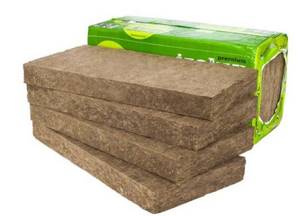
The thermal conductivity coefficient of the material ranges from 0.035 to 0.042 W/(m*K) and depends on how tightly the fibers are arranged. Operating temperature range from -190°C to +1000°C. The insulation does not burn and does not absorb water. Has excellent soundproofing properties.
Among the positive characteristics of thermal insulation made from basalt fibers are:
- long service life reaching 50 years;
- resistance to high temperatures and open flames;
- almost zero hygroscopicity;
- excellent thermal insulation properties;
- high level of absorption of sound vibrations;
- resistance to chemically active substances;
- high elasticity, preserving the shape and size of the slabs;
- possibility of use for external and internal work;
- light weight and easy installation;
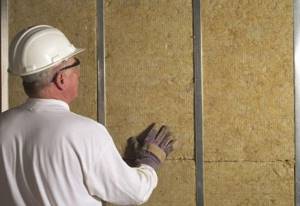
- environmental cleanliness;
- does not attract rodents and insects;
- does not serve as a basis for the appearance of fungus and mold.
At the same time, basalt insulation also has a number of significant disadvantages:
- high cost due to high energy consumption for production; the presence of installation joints that reduce the effectiveness of insulation; release of large amounts of dust when cutting and laying.
As you can see, basalt wool has many more positive characteristics than negative ones. But the relatively high cost often deters the buyer from choosing this thermal insulation.
Fiberglass mineral wool
The raw material for the production of glass wool is glass production waste, to which is added a mixture of quartz sand, limestone, dolomite, borax and soda. The volume ratio of glass and mixture is 4:1.
Broken glass and additives are sent to a melting furnace at a temperature of 1400°C. The molten mass is blown under pressure through a fine grid to obtain thin fibers with a length of 15 to 50 mm and a diameter of 3 to 15 microns.
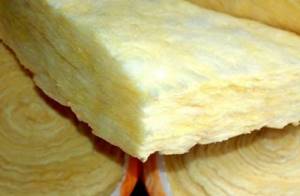
All this hot fiber mixture falls onto a moving conveyor, where a layer of glass wool is formed, the thickness of which depends on the speed of the line. The insulation tape obtained on the conveyor belt is cut into slabs or rolled into rolls.
The thermal conductivity coefficient of mineral wool is from 0.038 to 0.046 W/(m*K). Maximum operating temperature +450°C. The material is hygroscopic and can only be used for interior work. For outdoor work and in wet rooms, additional protection from moisture is required.
Among the advantages of mineral wool insulation are:
- low cost;
- light weight, allowing for insulation of weak structures;
- environmental cleanliness;
- good thermal insulation properties;
- ease of installation;
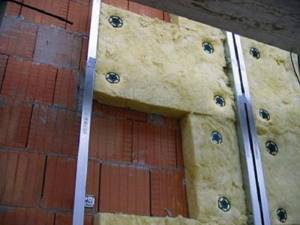
- non-flammability;
- resistance to fungus and mold;
- convenient transportation.
Among the disadvantages:
- high hygroscopicity;
- change in shape and decrease in thermal insulation properties when wet;
- service life no more than 10 years;
- the need to use eye and respiratory protection during installation;
- attractive to rodents;
- low resistance against aggressive chemicals.
As you can see, glass wool has a number of serious disadvantages that should be taken into account when choosing insulation. However, due to its relatively low price, it remains popular with buyers.
Related Posts
- Subtleties of attic floor insulation
- Choosing insulation for a frame house
- Choosing non-flammable insulation for walls and ceilings: tips and tricks
- Mineral wool, its characteristics and insulation composition
- Comparative table of thermal conductivity of materials and insulation materials
- Technolight
- Thermal insulation pierced mineral wool mats: material properties
- What's better
- Baswool insulation: characteristics and scope of application
- Features of basalt thermal insulation parka
- Izovol
- Mineral wool for wall insulation: size, thickness
- Insulating the attic from the inside if the roof is already covered: step-by-step instructions
- Isover thermal insulation overview
- How to properly insulate a wooden house with mineral wool
- Insulation of a veranda in a wooden house
- Features of mineral wool for wall insulation
- Foil insulation: types, properties and possibilities of use
- TechnoNIKOL
- Insulating the attic with foam plastic
- How to insulate the underground floor in a wooden house from the inside
- How to properly insulate a garage outside and inside with your own hands step by step
- Aluminum foil for bath insulation
- How to insulate a frame house on your own
- Knauf insulation technical characteristics, types and scope of application
Read with this
- Subtleties of attic floor insulation
- Choosing insulation for a frame house
- Choosing non-flammable insulation for walls and ceilings: tips and tricks
- Mineral wool, its characteristics and insulation composition
- Comparative table of thermal conductivity of materials and insulation materials
- Technolight
- Thermal insulation pierced mineral wool mats: material properties
- What's better
- Baswool insulation: characteristics and scope of application
- Features of basalt thermal insulation parka
Application area
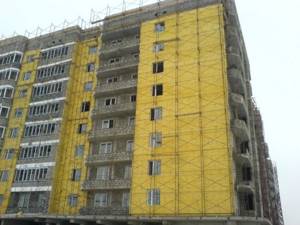
Stone mineral wool has been used for quite a long time - since the mid-20th century, therefore it has established itself as a reliable building material. It is used:
- For insulation of external walls. This allows buildings to be built with less consumption of building materials. A 10 cm layer of wool replaces 2 meters of brickwork, which allows significant savings on house construction.
- For piping pipes made of various materials. The metal does not corrode in contact with chemically neutral wool, so it lasts longer.
- For insulating the internal walls of the house, as well as increasing sound insulation properties. When laying single-layer bricks, you can also increase the internal space by covering the walls with a thin slab of mineral wool.
- The material is laid under a concrete screed in the floor. This reduces sounds and also controls heat consumption.
- Roof insulation to eliminate heat loss during the winter season, as well as additional cooling of the room.
- In the attic, wooden parts are covered with mineral wool to protect them from accidental fire.
- Pipes in the apartment can be insulated with rolled wool to avoid the formation of condensation due to the flow of cold water.
Rock wool is believed to repel mice and other rodents. According to the latest data, this is not the case. Animals feel good in natural material and make nests inside, so it is recommended to use additional anti-rodent products.
Options for insulating walls outside
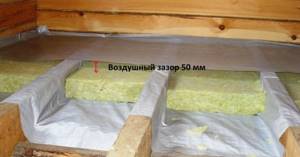
For the facade, large-area slabs with a thickness of at least 100 mm are used. Suitable for rolls, not covered with foil. Fastened with dowels or special glue for mineral slabs. It is better to use both options at the same time. An important indicator for the facade is the density of mineral wool. It must be at least 45 kg/m3. For decorative plaster, cotton wool with a density higher than 100 kg/m3 is used.
The inside walls are insulated with mineral wool with a density of less than 45 kg/cubic m.
Insulation of floors
To insulate the floor, slabs with a density of 30 to 45 kg/m are used. It is placed in cells made of wooden blocks before pouring concrete. A film is placed under the layer of cotton wool for additional protection from moisture.
